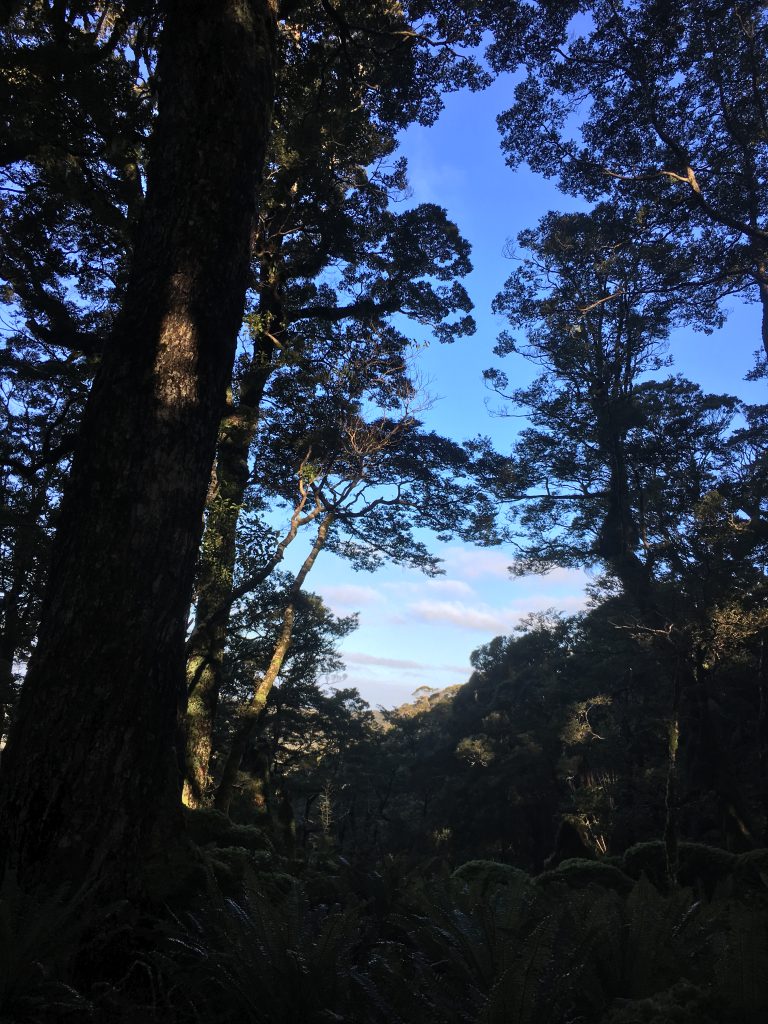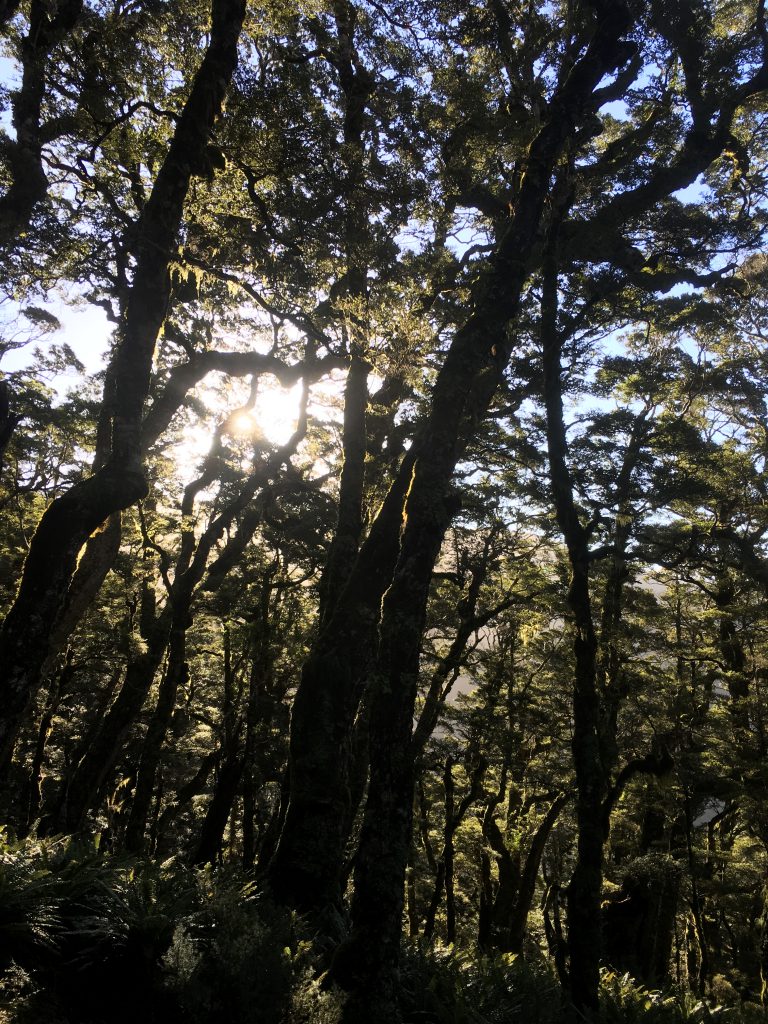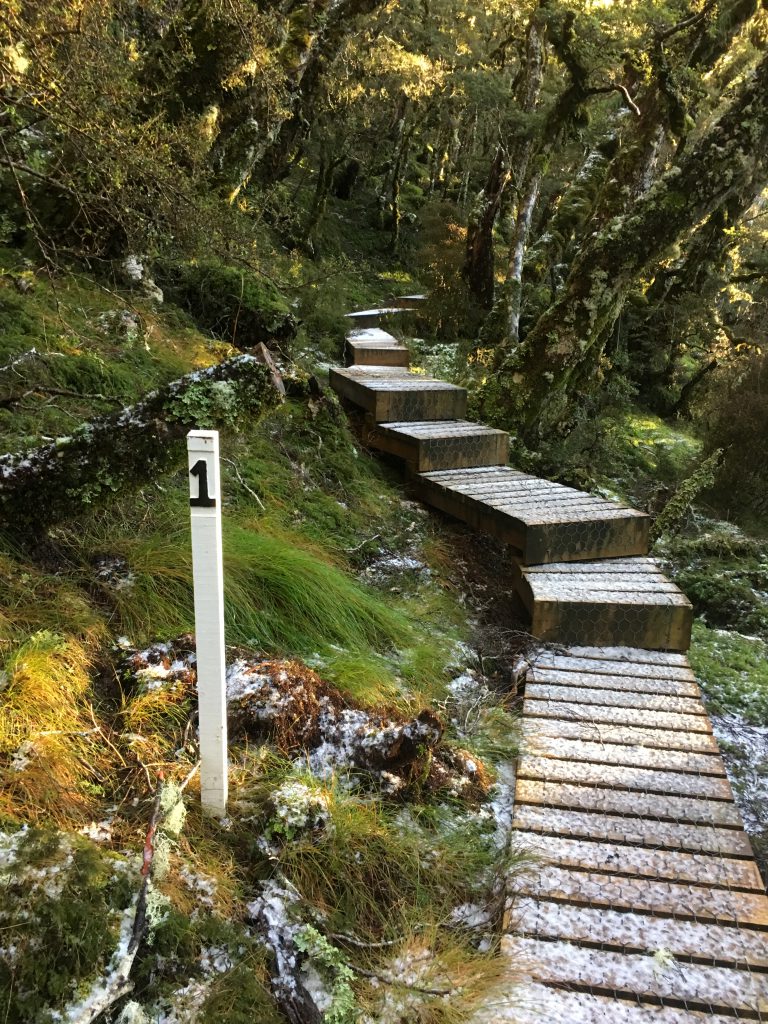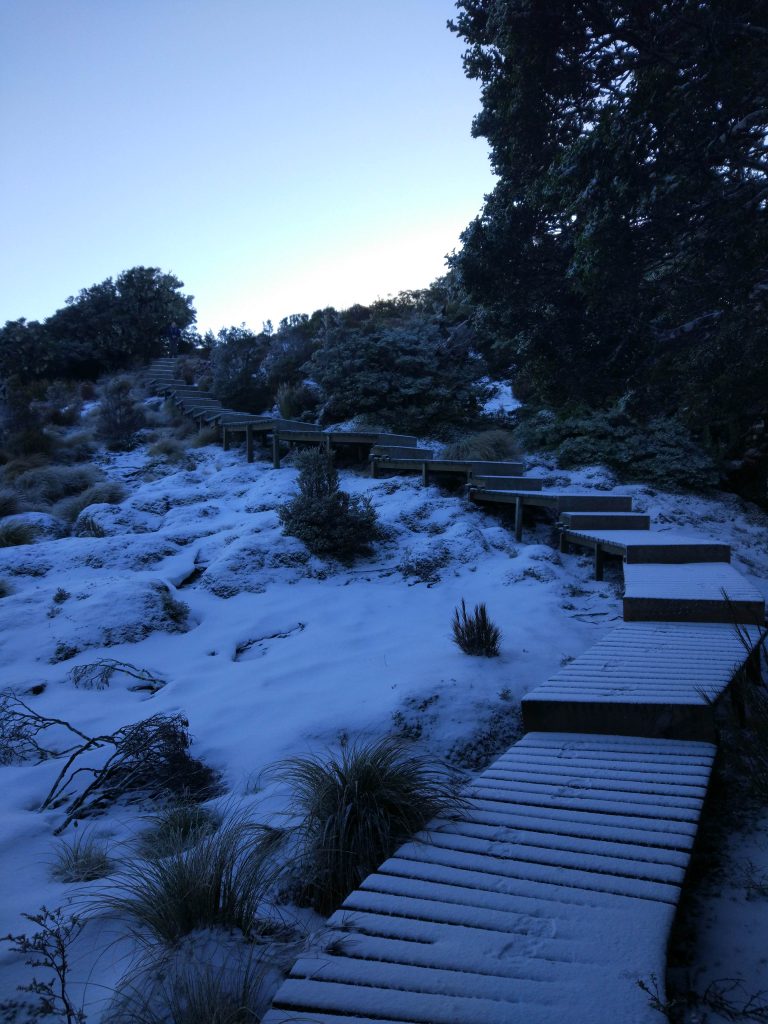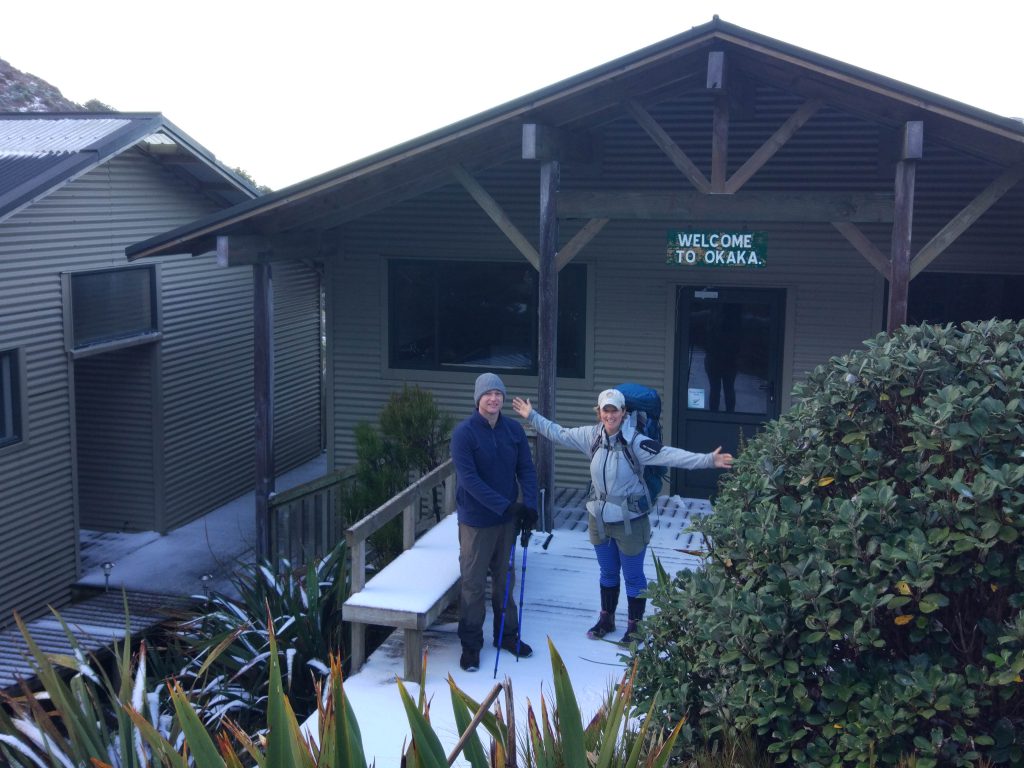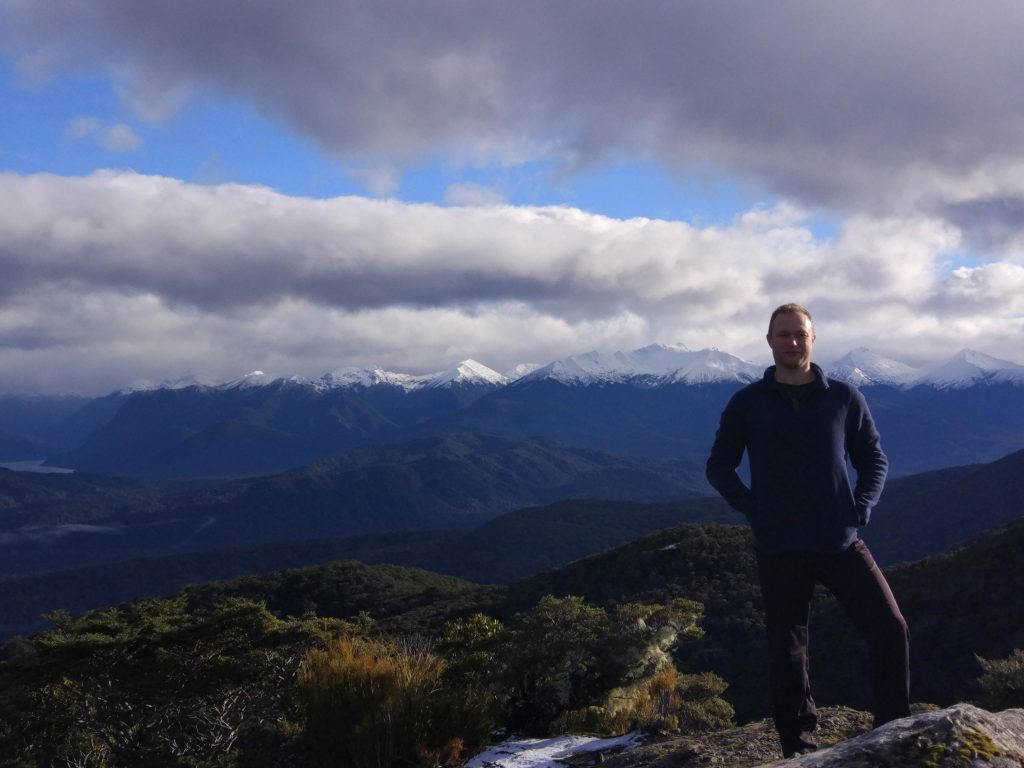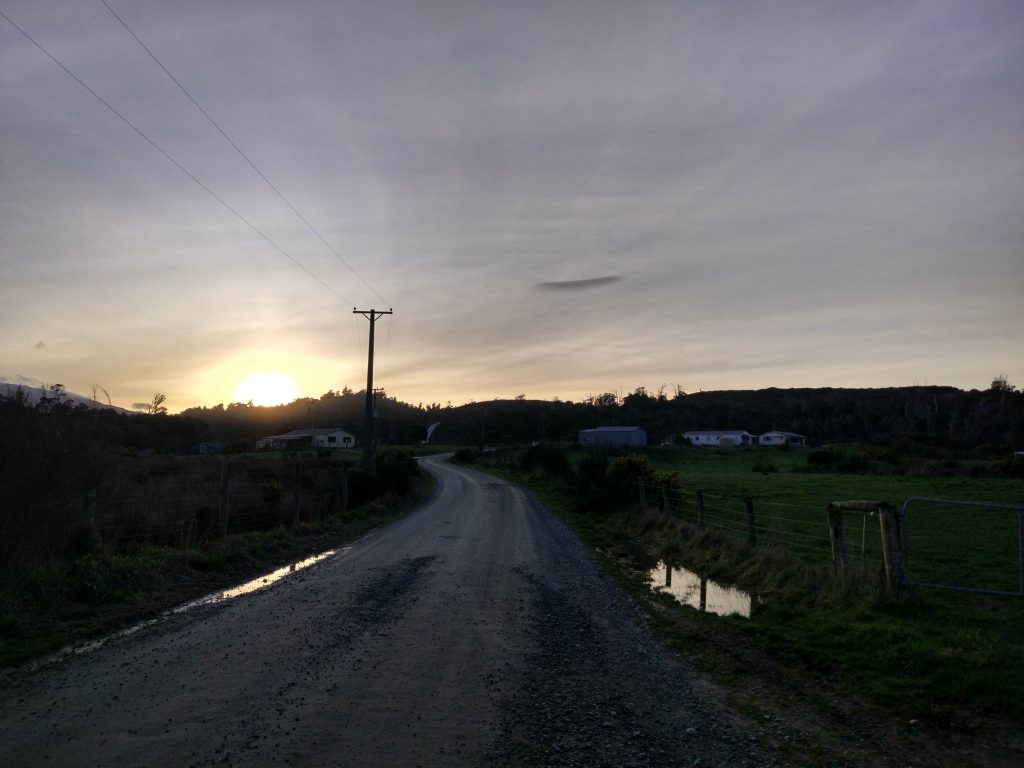The Hump ridge track was a three day hike on the southeast edge of Fiordland National park and on the south coast of New Zealand’s south island. Since the track was done in the middle of winter with limited daylight hours the challenge was to cover the 20 kilometers each day and get to the hut before dark.
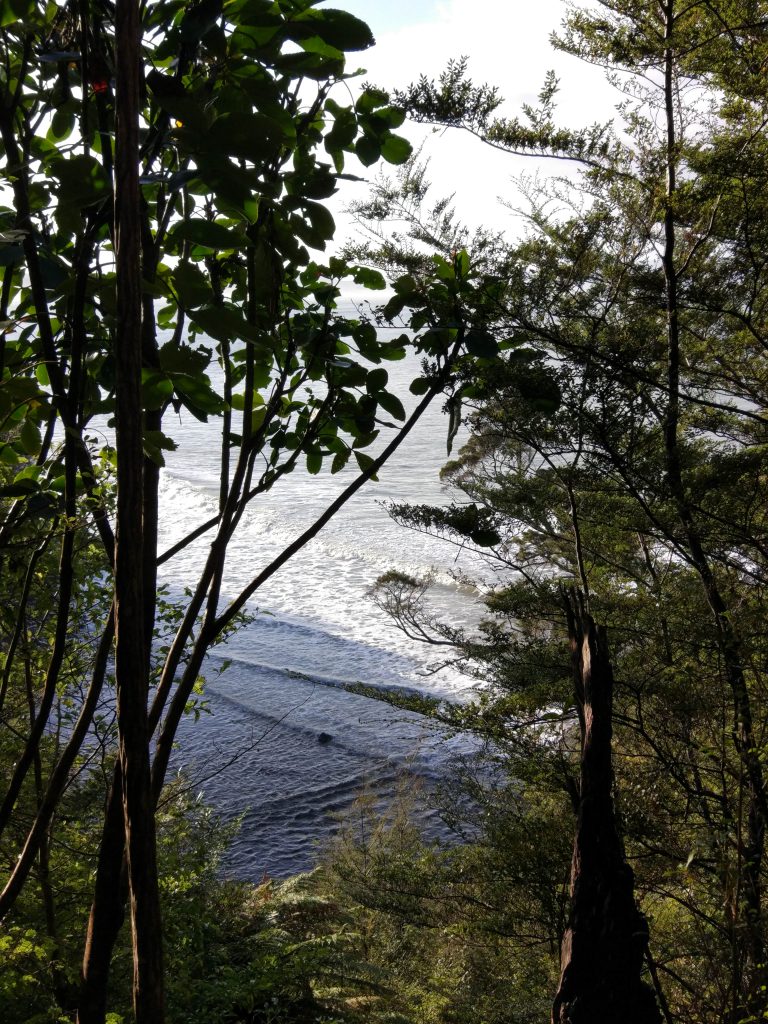 The first day contained the greatest risk in terms of arriving late and accordingly we embarked during twilight to give us the best chance. The track was well formed and followed the southern coast at times crossing the beach.
The first day contained the greatest risk in terms of arriving late and accordingly we embarked during twilight to give us the best chance. The track was well formed and followed the southern coast at times crossing the beach.
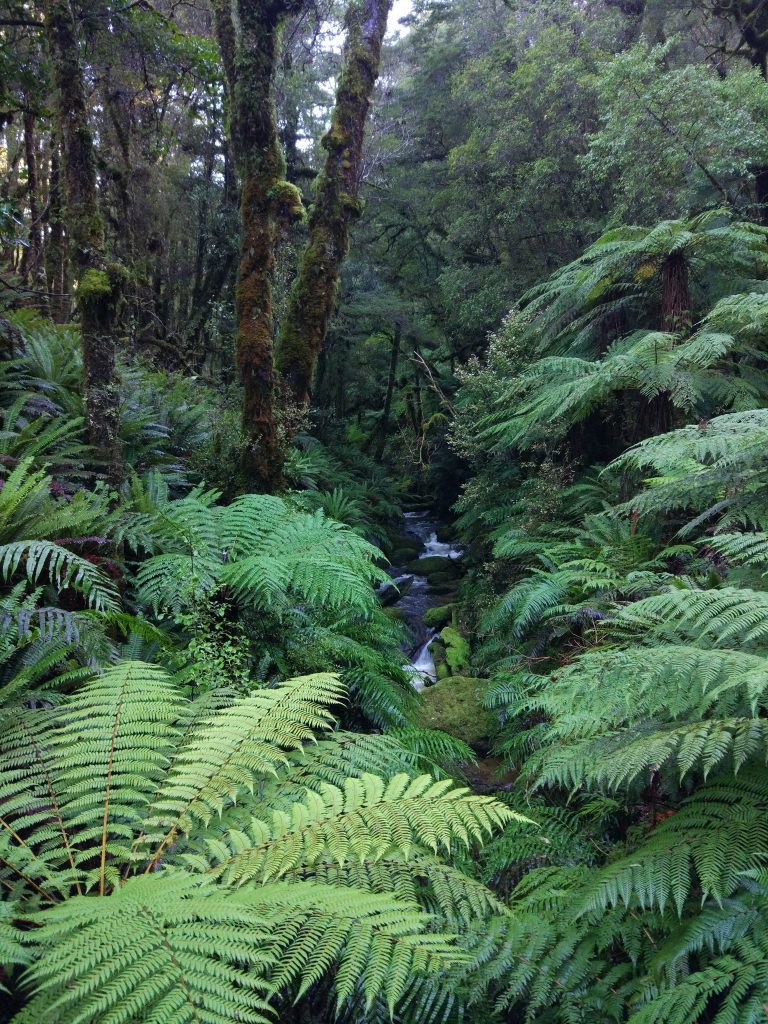 The Okaka hut has it’s water turned off during the winter to prevent frozen water bursting the pipes so it was this not entirely clean stream that provided us with the crucial fluid for cooking, cleaning and drinking the next day. Unsurprisingly I won the honor for carrying the extra water.
The Okaka hut has it’s water turned off during the winter to prevent frozen water bursting the pipes so it was this not entirely clean stream that provided us with the crucial fluid for cooking, cleaning and drinking the next day. Unsurprisingly I won the honor for carrying the extra water.
The weather could not have been better for the first two days of our hike, and the clear blue sky and non-existent winds made for perfect temperatures during the trek.
The native bush in the area is similar to that in other parts of Fiordland and there were a large number of vermin caught in traps along the route. Bird life was less than expected however we did see a number of small native birds over the three days.
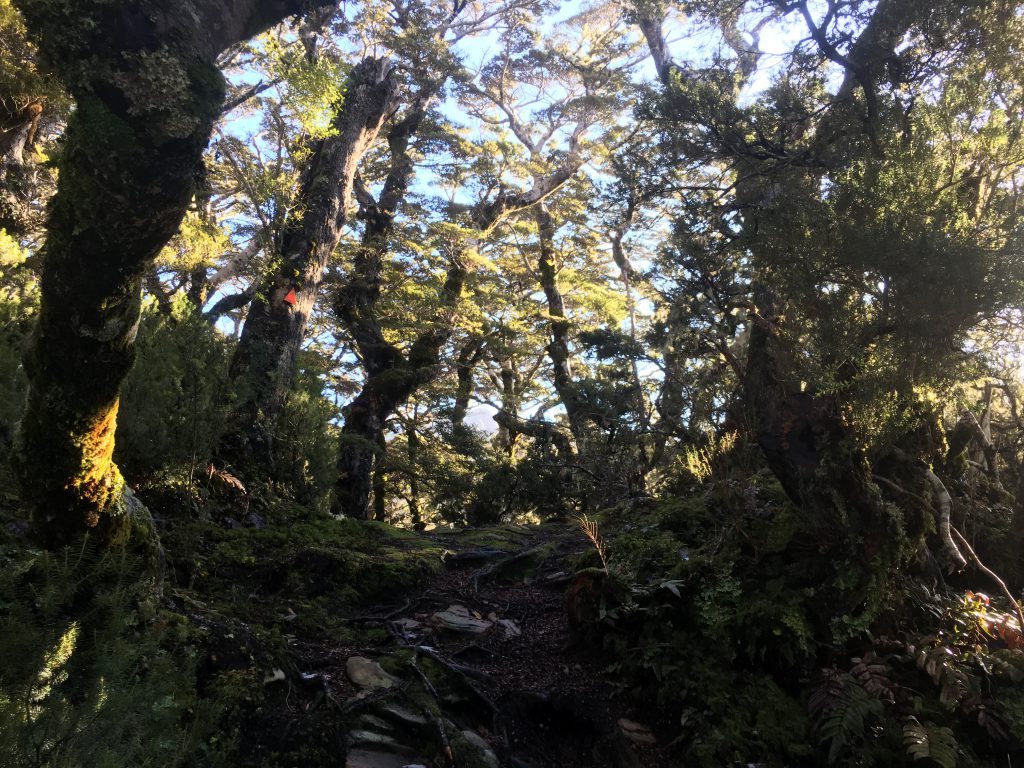 Once we were above the bush line there was snow from previous days. The beautiful weather afford us some spectacular views of the south coast and surrounding National Park.
Once we were above the bush line there was snow from previous days. The beautiful weather afford us some spectacular views of the south coast and surrounding National Park.
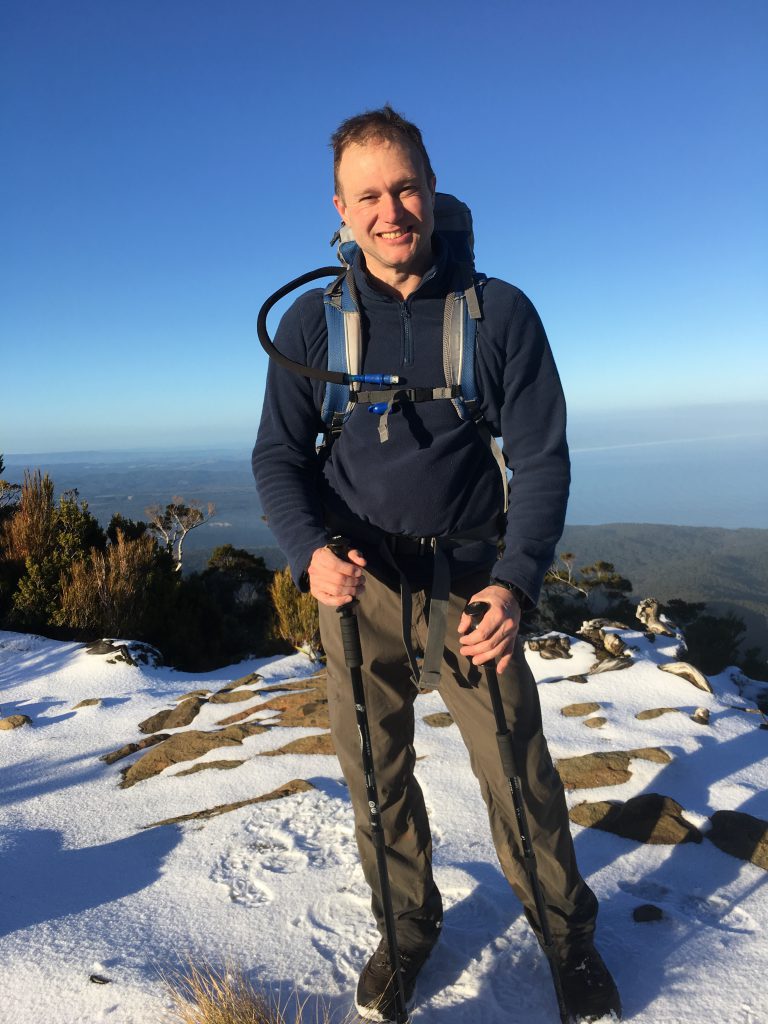 Hiking poles are an essential component for long hikes with a heavy pack, and in my estimation reduce the load on your stabilizing and supporting muscles as you climb around and over tree roots and other hazards on the track.
Hiking poles are an essential component for long hikes with a heavy pack, and in my estimation reduce the load on your stabilizing and supporting muscles as you climb around and over tree roots and other hazards on the track.
The one kilometer marker was a welcome sight and the raised board walks a much appreciated relief after the climb to Okaka Hut.
The snow is especially deep in areas shaded from direct sunlight and the climb to Okaka is steep right to the end.
The Okaka hut is relatively new and impressive in size and facilities, especially during peak season when the bar and heating are available. In our case the water was off and the heating disabled, so the lack of a fireplace was a disappointment for us.
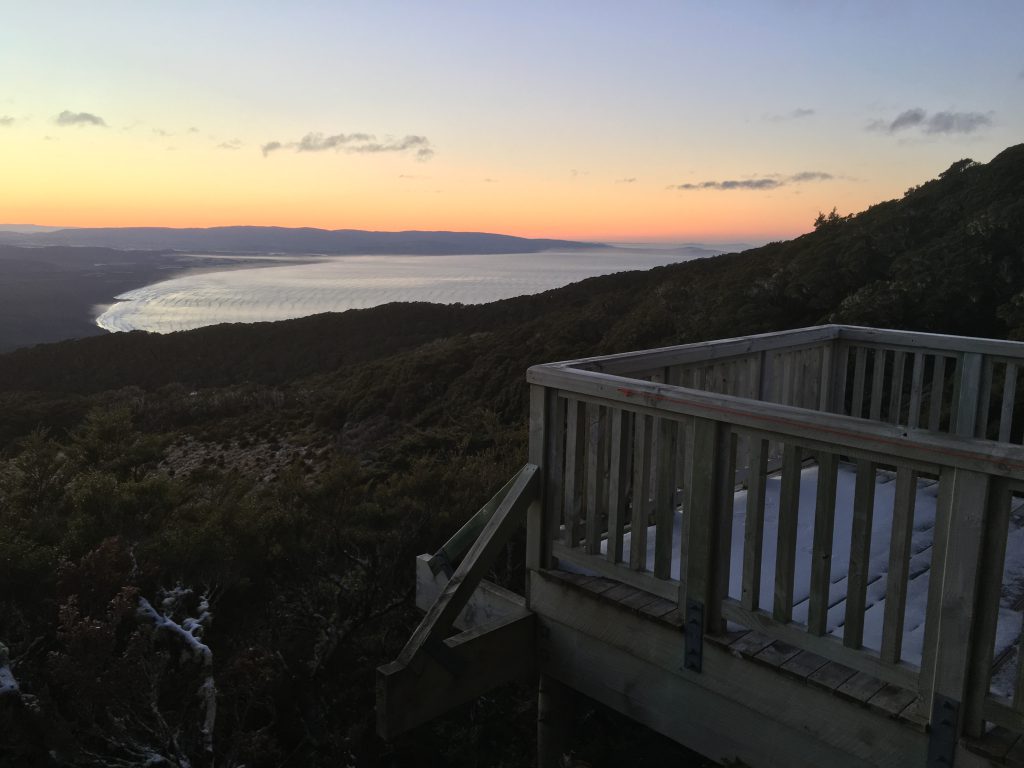 Sunset was stunning and we were lucky to have good weather and see the view.
Sunset was stunning and we were lucky to have good weather and see the view.
During the winter months the hut is closed off in sections and the section shown above is the bunk bed wing that wasn’t accessible to use. It is a mirror image of the other side as far as I can tell, which is three rooms with about a dozen bunks in each. It must get quite busy during the season, as it was for us, we were the only ones staying that night so we had a room for ourselves.
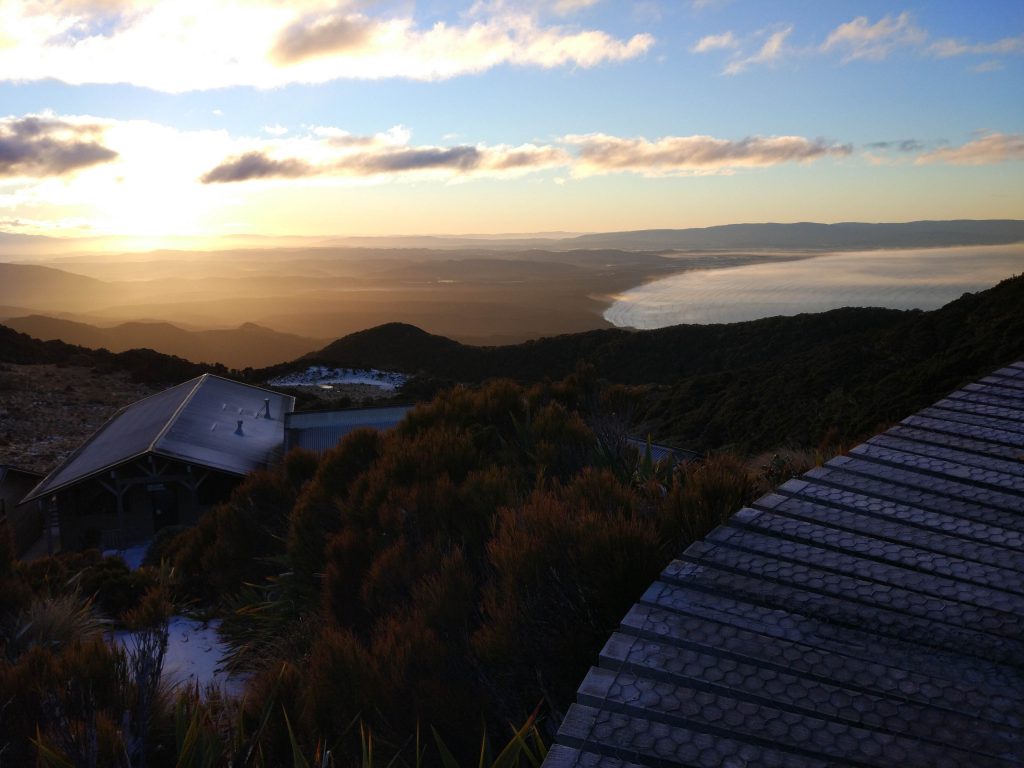 Starting early the next day to ensure we had time to make it to the last hut some snow had survived the night from the days prior. Again we had a very calm day with a lot of sunshine and perfect temperatures.
Starting early the next day to ensure we had time to make it to the last hut some snow had survived the night from the days prior. Again we had a very calm day with a lot of sunshine and perfect temperatures.
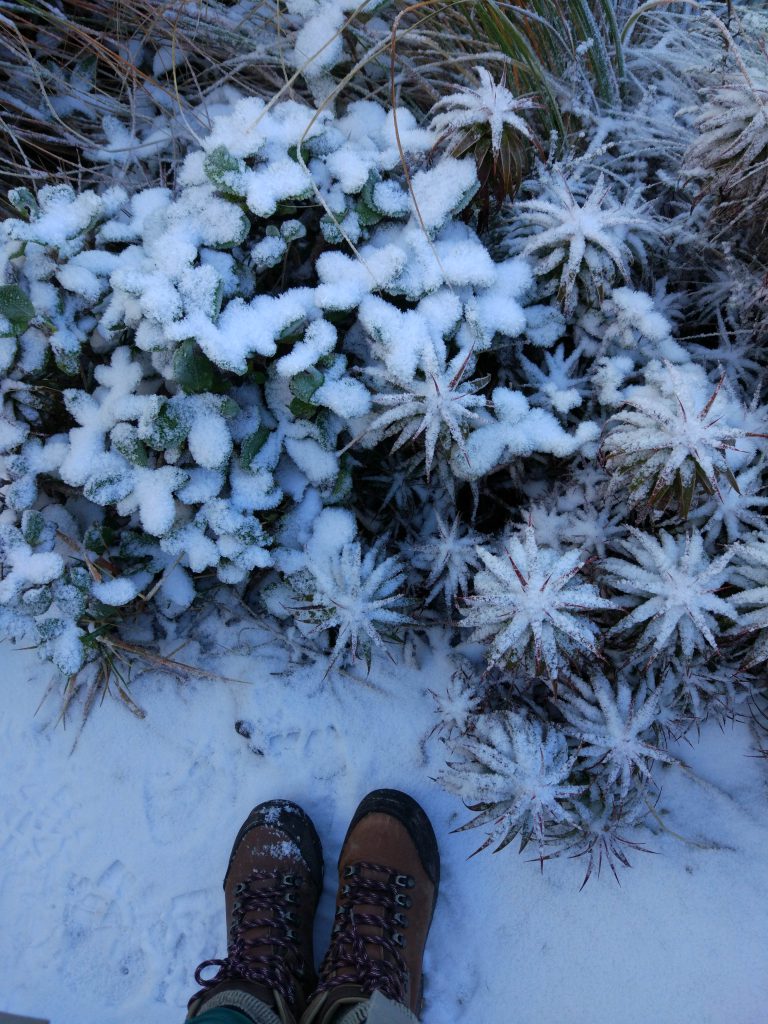 The alpine flora were quite beautiful both the color and the shape.
The alpine flora were quite beautiful both the color and the shape.
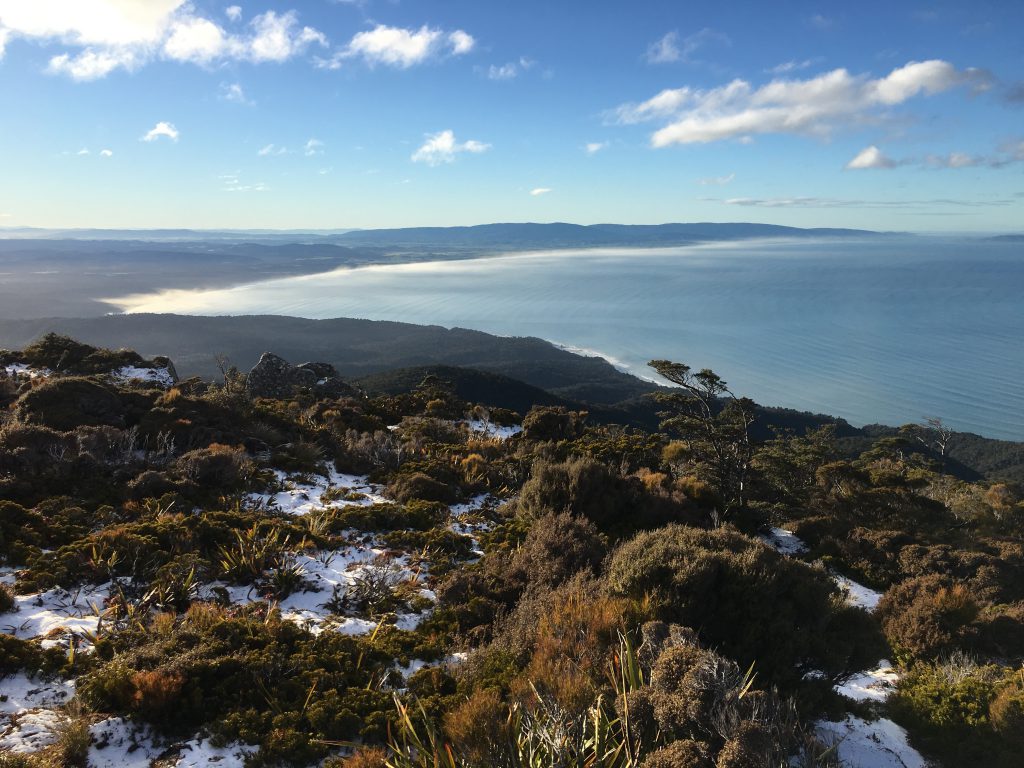 The south coast of the south island of New Zealand from the vantage of the Hump Ridge in south east Fiordland national park.
The south coast of the south island of New Zealand from the vantage of the Hump Ridge in south east Fiordland national park.
Yours truly standing for a photo on the Hump ridge looking west toward the southern Alps.
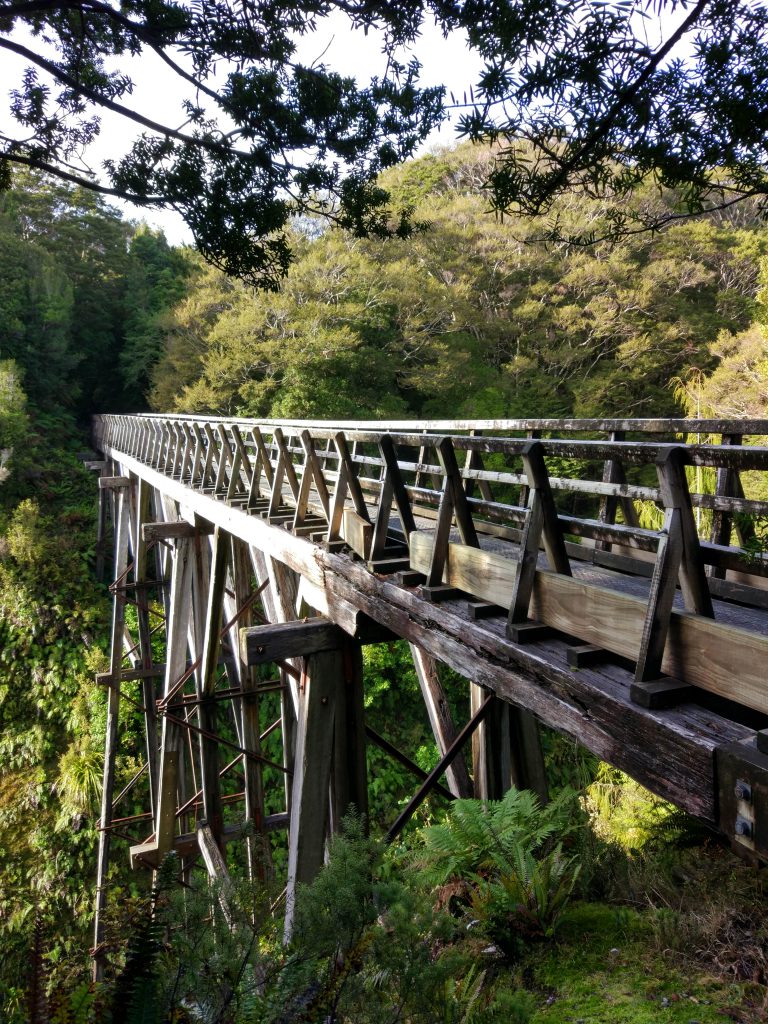 One of the sights of the second day hike were the wooden rail viaducts constructed in the early part of the twentieth century. This is the first of three large viaducts we crossed during the second day following the old rail lines back to the next hut.
One of the sights of the second day hike were the wooden rail viaducts constructed in the early part of the twentieth century. This is the first of three large viaducts we crossed during the second day following the old rail lines back to the next hut.
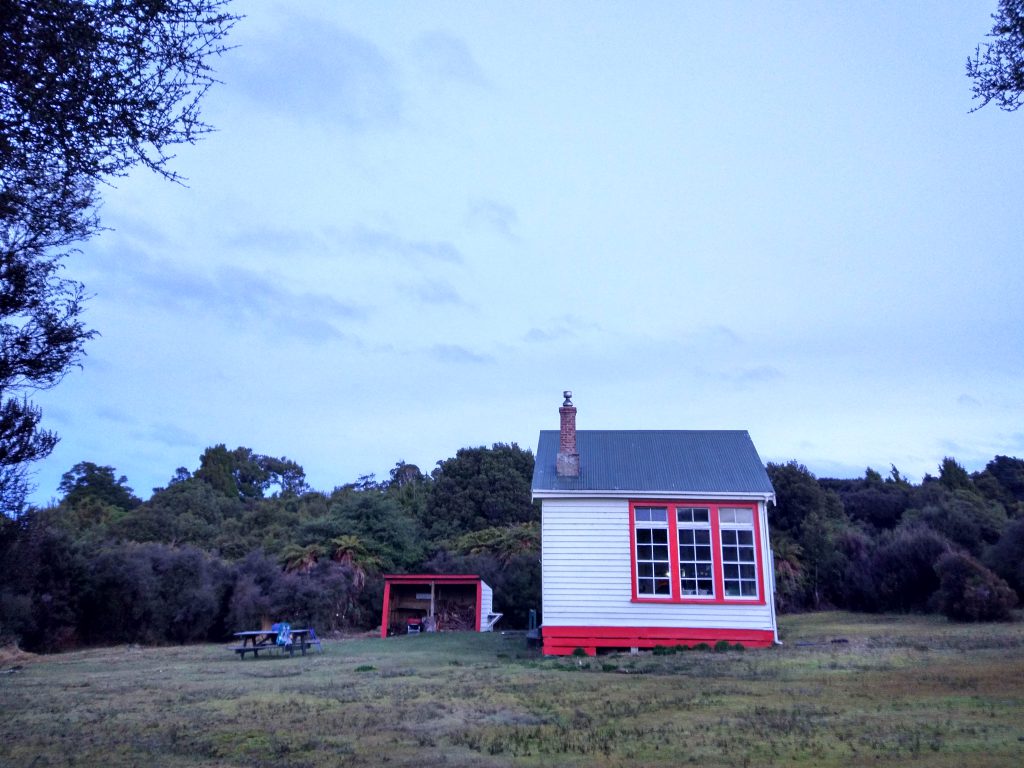 At the end of the rail tracks there is one remaining building from the log milling operation at Port Craig, the schoolhouse which is now converted as a DOC hut.
At the end of the rail tracks there is one remaining building from the log milling operation at Port Craig, the schoolhouse which is now converted as a DOC hut.
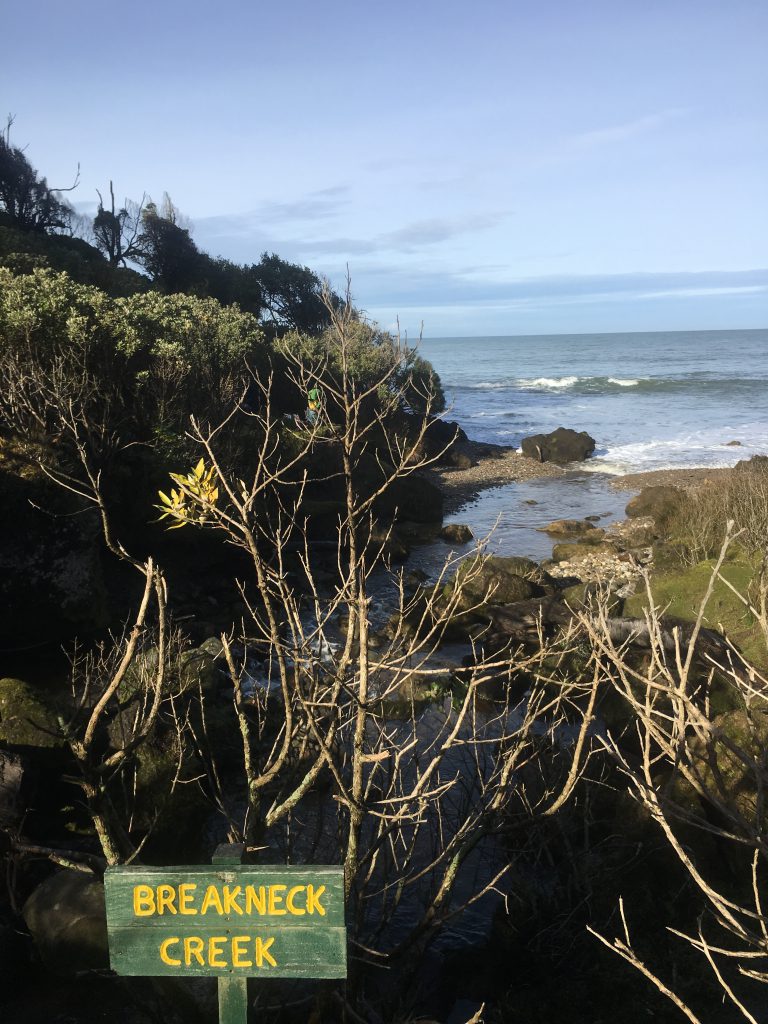 The final day skirts the south coast for most of the time. Once we escaped the bush at Breakneck Creek, there was a significant section along the beach.
The final day skirts the south coast for most of the time. Once we escaped the bush at Breakneck Creek, there was a significant section along the beach.
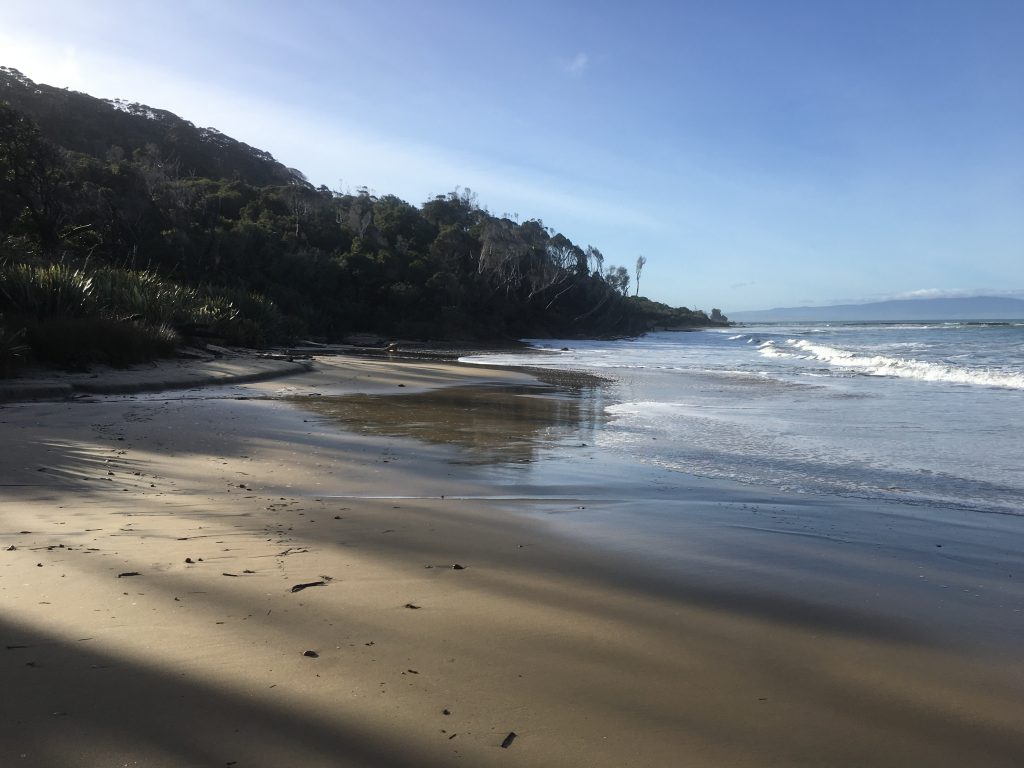 Up ahead in the photograph the tide was almost completely in and so we had to navigate our way through the waters at times.
Up ahead in the photograph the tide was almost completely in and so we had to navigate our way through the waters at times.
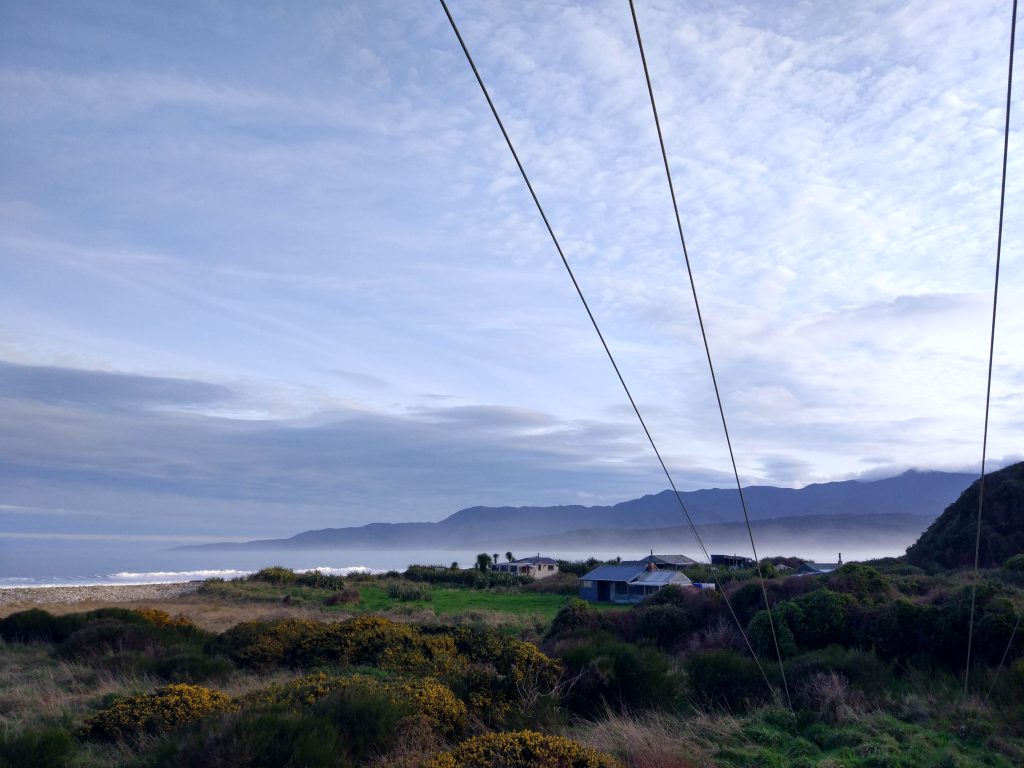 Some hardy souls have houses on the south coast where fishing and hunting are a mainstay of the locals.
Some hardy souls have houses on the south coast where fishing and hunting are a mainstay of the locals.
Finally at the car park and back to civilization just in time before the sunset.
